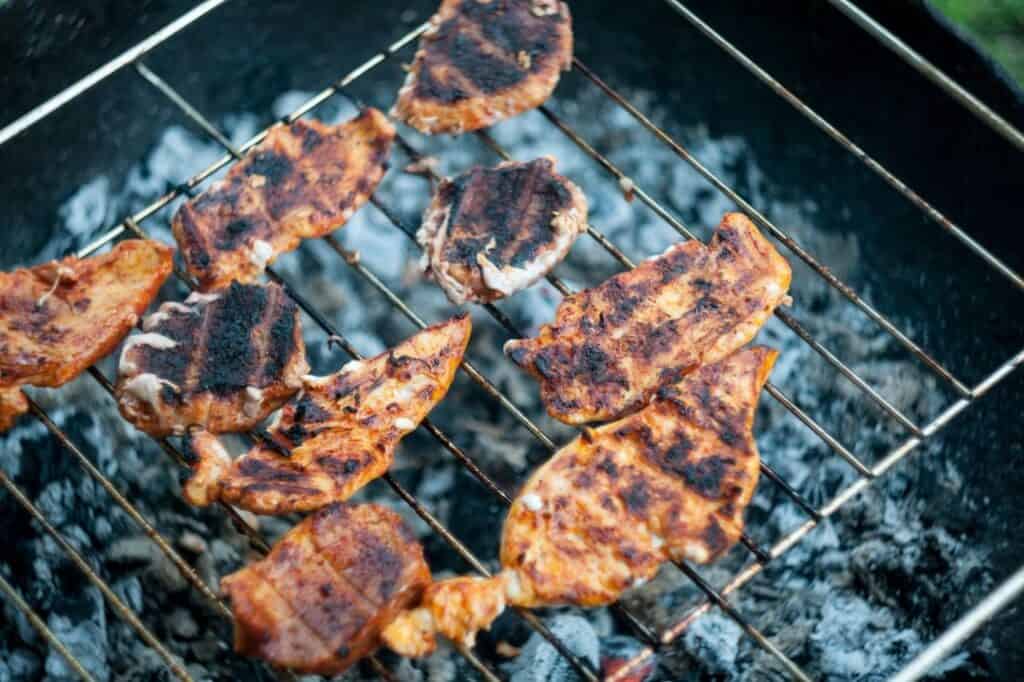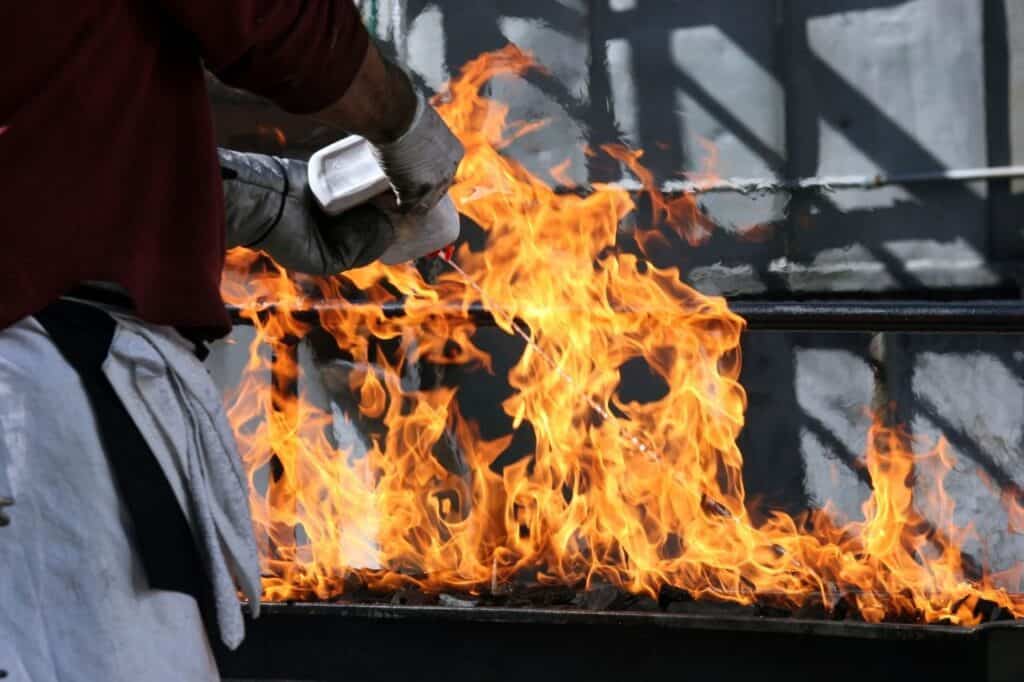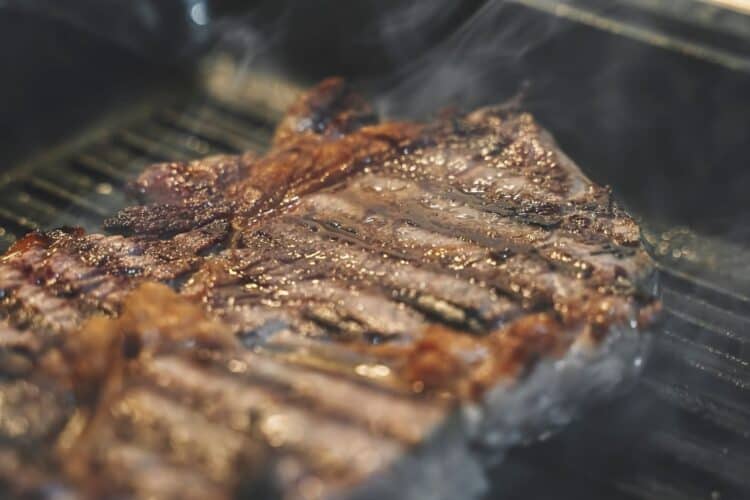Smoking meat might seem like an easy feat for some but I think those folks need a bit of reckoning for this practice requires a few special factors to pull off. I was a novice once and to perfect smoking meats, I had to face several challenges along the way.
For today, we will discuss the most common blunders that amateur BBQ enthusiasts make, as well as the ways one can avoid such slip-ups.
Some of the mistakes that beginners make when smoking meat include selecting the wrong cuts, poorly-chosen wood, a lack of patience, improper control of smoker temperature and more. Like any cooking method, one needs to be prepared, consistent, patient and dedicated in order to serve delicious, exquisite slabs of juicy meat with the right colour and flavour.
So, it’s time to step up your smoking game and advance from novice to pro in no time with these tips.
Common BBQ Beginner Mistakes And How to Avoid Them
1. Selecting The Wrong Meat Cut
While it can be quite enticing to just grab the cheapest meat cuts that you can get from the butcher’s, it is still a worthwhile decision to spend a little on your meat. Or rather, buy the best-quality meat that your wallet allows.
Always go for fresh ones, not the frozen stuff. Bright colours are an indicator of freshness. Lack of excessive juice is also a reliable signifier.
The best meats for BBQ cookouts also include a nice layer of fat on them. Massive marbling makes for tender meats. However, if you want to cut down on fat, you can also trim the meat once it’s finished cooking.
If you’re up for beef, make sure to choose the most tender cuts – classics like the T-bone, porterhouse and ribeye steaks are good old reliables. Strip steaks are also tops for smoking. If you have the bucks, go big with filet mignon.
For pork, ribs are a crowd favourite. The same can be said for pork shoulder in case you feel like showing off your love for pulled pork to your mates.
2. Poorly-matched Wood And Meat
Apart from the dry rub and marinade, the wood you choose for your meat is crucial since wood also affects the flavour. Thus, you need to go for one that best suits your choice BBQ meat.
Want meats that deliver a bit of spice and richness? Go for mesquite or hickory wood chips. If you have a hankering for the sweetish stuff, your choice sweet marinades are best paired with wood that has apple or cherry flavours.
3. Rushing The Cooking
Remember the adage, ‘patience is a virtue’ – now, this maxim applies to all things, even BBQ! Good things, or rather, good, scrumptious grilled meats come to those who wait.
Lack of patience for the smoking process is a common rookie mistake and to be a pro, you should train yourself to wait for the meat to cook and develop its awesome flavour and texture.
Smoking cuts of meat takes a while, around 2 hours tops. For tougher meat cuts like brisket, you need to have the patience of Yoda for the meat to get done since this feat will take you a nice 8-14 hours for the grilling to end.
Do not rush smoking since this is a cooking method that ignores time limits. In a Yoda voice: A 30-minute meal, barbecue is not!
4. Incorrect Temperature Control

To get the best Instagram-worthy and cookbook-worthy BBQed meats, keep in mind that you need to smoke your meats under stable, low heat for an extended time.
Amateurs often make that mistake of cooking the meat in excessively high temps, which result to food that is tough and dry. You may want to maintain the temperature between 225 to 250°F or 107 to 121°C.
In addition, managing the temperature of your smoker also depends on the smoker type you are handling. You also need to utilise thermometers with probes for measuring meat temperature and air temperature separately.
Make sure that the smoker is stabilised as well before putting in the meat. Allow it to settle for 15-20 minutes using a thermometer. Keep it away from direct heat till the temperature evens out.
It is also wise to have a water pan filled with water in the BBQ chamber. The water pan will take in heat and help in moderating smoker temperature. Check every 3 to 4 hours and refill with water when the H2O evaporates.
5. Too Little Or Too Much Seasoning
Always scatter a proper amount of seasoning on your BBQ. Do not scrimp on the stuff, nor bomb it with your choice seasonings and spices either. You don’t want to wrap your teeth around something exceedingly salty or dismally bland, do you?
6. Using Lighter Fluid To Fire Up Your Charcoal

We want grilled meat now, you say. But then again, smoking meat is for folks with the patience of saints. Thus, lighter fluid is not your friend – as far as BBQed meats are concerned, anyway.
So, why scrap this speedy firestarter? To begin with, lighter fluid when used for cooking meat leads to unpleasant odours and flavours on the meat. It also contradicts the whole point of slow-cooking meats for the best texture ‘n’ flavour!
The best thing to do is to make use of a high-quality chimney starter. If you want to perfect your BBQing skills, this device is a nice investment. However, if you are not up for it, you can make do with bunched-up newspapers or paper towels. Put the papes on the smoker’s bottom grate, dispense the chimney with the coals, set it on the grill and fire it up using a match.
7. An Overcrowded Smoker
If you are using an average smoker, remember not to put all of your meats in it at once. For starters, the amount of smoke that the device might produce will not be sufficient for all meats inside. The heat will also become unmanageable.
Know your smoker more and learn its limits and the ways to handle it properly for quality BBQ.
8. Constantly Opening The Lid To Check Your Bounty
I know, smoking your choice cuts of meat is exciting. We cannot wait to gorge ourselves silly. Unfortunately, frequently closing and opening the lid only leads to more heat escaping, thus leaving the temperature of the smoker on a less optimal level. Just open the lid if need be, like minding the coals, moving the meat around and the like. Don’t worry, your meat won’t fly away.
9. Excessive Smoke
Smoke won’t make your gourmet barbie tastier. It will only put frowns and grimaces on people’s faces and you won’t hear those much-coveted oohs and aahs.
So, stop smoke from overwhelming your meaty grub by using the right amount of wood – this will depend on the grill type you’re handling. Start with around 2 ounces of the stuff and make adjustments later.
Remember to keep those exhaust dampers and inlets opened a bit. Close that inlet damper carefully though to stop the fire from glowering even further.
10. Eating The Meat Right Off The Smoker
For more optimal BBQed meats, allow it to settle first before bringing out the knives and forks. Let the meat take in its yummy juices and flavours for that gorgeous smoky taste. Take the meat out of the smoker and put them on a plate. Allow to rest for a half hour at the least. You can also choose to cover those bad boys with foil.
It’s not rocket science but smoking meat is still a feat that requires mastery for a satisfying gastronomic experience. Rookies commit mistakes all the time, and we learn from those blunders. Lastly, don’t take it too seriously! Just breathe in all those scrumptious aromas, and enjoy the experience.
Related Questions
If you are after wood flavours, pellet grills are your best bet. Then again, whichever smoker you endorse, it is best that you get one that is user-friendly. This is crucial if you’re still an amateur when it comes to BBQ cooking.
It is essential that you rotate your meats every few hours. You can rotate meats following 2 or 3 hours of cooking. If you are using your choice mop, you can also douse your meats with it. Inspect your meats once more following an hour before it gets fully cooked.
BBQed meat is smoked correctly if it comes with pinkish rings within its crispy exteriors. This means it has nitric acid, an indicator of a successful smoking process.
Cooking is done once the meats have reached an internal temp of 180°F or 80°C. Allow the meat to rest for 30 minutes or up to an hour, then serve. If using aluminium foil, wrap the meat with it and allow to rest for a while. Remove the foil and let the meat rest for another half hour or more.
- Does Using Pellet Smokers Dry Out Meat? – Myth or Fact - January 4, 2022
- 12 Best Meats To Cook On A Pellet Smoker - December 30, 2021
- Dry Brining: What, How, Why & More - December 28, 2021


